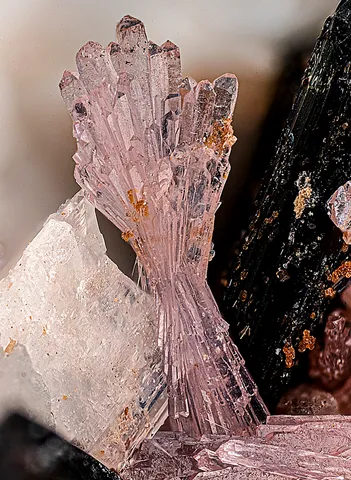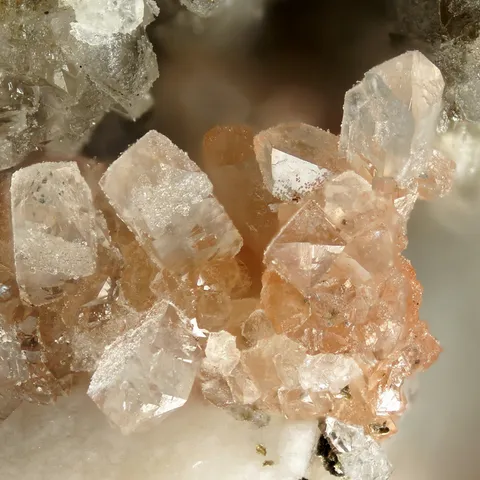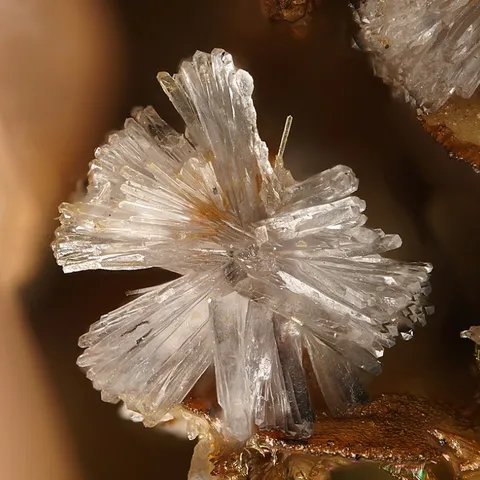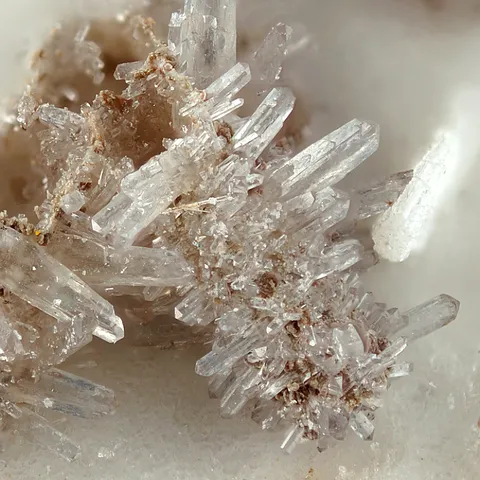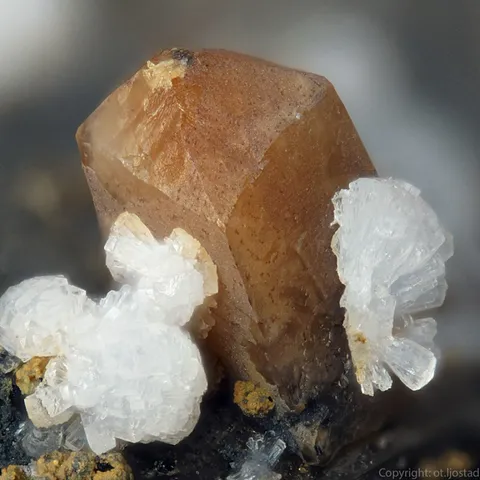ANCYLITE
Class : Carbonates, Nitrates, Borates
Subclass : Hydrated carbonates
Crystal System : Orthorhombic
Chemistry : SrCe(CO3)2(OH) H2O
Rarity : Fairly common
Ancylite appears mainly in nepheline syenites, carbonatites, and generally in alkaline rocks and their pegmatites ; it is particularly common in the calcite veinlets that run through these rocks. Its name comes from the Greek ankilos (curved), recalling the rounded crystalline forms that this mineral presents. Its colors are variable (gray to pale yellow, pinkish, sometimes brown) and it forms small stubby to elongated pseudo-octahedral or prismatic crystals with curved and dull faces, frequently associated in groups.
Ancylite in the World
Main photo : Ancylite from Poudrette Quarry, Quebec, Canada - © Gianfranco Ciccolini
Twinning
No twin report for this mineral species.
Fakes and treatments
Hardness : 4 to 4.5
Density : 3.95
Fracture : Irregular
Trace : White
TP : Translucent to transparent
RI : 1.625 to 1.735
Birefringence : 0.110
Optical character : Biaxial -
Pleochroism : Not visible
Fluorescence : None
Solubility : Acids
Magnetism : None
Radioactivity : None

